|
I recently started a podcast called “You Are More,” that focuses on living life outside the box yet inside the bounds of God’s perfect plan. As a therapist, I want people to know they are not defined by any box or label in their life. This idea originated after I wrote a book about each person being more than their relationship status. God defines us; labels just help describe us. One of my podcast guests posited that the saints are more than saints. Though we know saints by the parishes, organizations, and cities that honor them, or by reading their names in Scripture, they are humans at their core. The Chosen is a TV series that exhibits the humanity of Jesus and His disciples beautifully. After watching the first three seasons of The Chosen, characters pop off the page when I read or hear passages from the Bible. This week, we celebrate two apostles who share a feast day: St. Simon (the Zealot or the Canaanite) and St. Jude (also known as Thaddeus). Both men are lesser known than Peter, James, or John. And yet, they are close followers of our Lord. I can picture their personalities and their journeys. In the show, they are known as “Z” and Thaddeus. Franciscan Media explains that for Zealots, “the messianic promise of the Old Testament meant that the Jews were to be a free and independent nation. God alone was their king, and any payment of taxes to the Romans – the very domination of the Romans – was a blasphemy against God.” Loyola Press adds that, “some Zealots were very concerned that the spiritual ideals of their religion be kept. But others acted more like modern-day terrorists by raiding, killing, and inciting riots.” Linked below is a depiction of Simon Z being called to follow Jesus that shows he felt defined by his zealot training and weapons. Jesus told him that He does not need Simon, but he wants him… not for his weapons, but for him. https://www.youtube.com/watch?v=4JgOKkGBIQs&t=182s In this dinner conversation at the Wedding at Cana, Thaddeus shares with the disciples how he met Jesus working by his side at a construction site. Linked below: https://www.youtube.com/watch?v=xWciL5R5XtY The disciples were friends with Jesus and with one another. They lived in community and had their likes and dislikes, their strengths and weaknesses. The reason the Church shares the stories of the saints is not to show us unattainable ideals, but to remind us of what is possible for each of us. We can find our story in their stories and be encouraged that they were able to hold onto hope, faith, and love throughout life’s ups and downs. You may be a passionate person who is willing to take risks in the name of peace and justice like Simon Z. You may be meeker and inclined to accompany others, so they feel seen and heard like Thaddeus. You may even connect with another disciple better than either of these men, but that is a beautiful reminder that you are unique and have your own gifts. If you are not authentically you, you cannot be a saint. Jesus made you to be who you are, not someone else. Simon and Thaddeus may be lesser known in the story compared to the bigger names, yet, they are wanted by Christ. Jesus wants you to follow Him just as you are. Some of us have lost hope in our lives, and as a therapist I like to offer to hold the hope for my clients until they are ready to pick it back up again. In the Church, we know Thaddeus as St. Jude, the patron of hopeless causes. His name was originally Judas Thaddeus, which was eerily like the name Judas Iscariot, the one who betrayed Jesus. Because of this similarity, people were afraid to pray to him until St. Bridget had a vision of Our Lord asking her to confidently pray for his intercession. He became known as Jude to differentiate him from the infamous Judas. Now, countless miracles are attributed to his intercession. Simon and Jude both show different sides of Our Lord. Our Lord can be determined, feisty, and aggressive while also being slow, quiet, and gentle. Both exhibit hope. Article 1817 of the Catechism of the Catholic Church describes hope as “the theological virtue by which we desire the kingdom of heaven and eternal life as our happiness, placing our trust in Christ's promises and relying not on our own strength, but on the help of the grace of the Holy Spirit.” How are you desiring the kingdom of heaven? How can you place a greater trust in Christ’s promises this week? How can you rely less on your own strength and more on the grace of the Holy Spirit? Sts. Simon and Jude, pray for us! **This photo is from The Chosen television series.**
0 Comments
This October, as summer turns to fall and the days start getting shorter, we sometimes find ourselves with opportunities to reflect on some of life’s bigger questions. I often find myself this season asking deep questions on a nice walk outside while admiring the beauty of nature. A lot of times, these big life questions usually involve prayer, discernment, and looking to role models. When I sat down to look at the saints whom we celebrate this October, I realized that many of them had to face similarly tough life questions. The popes, young people in the Church, and martyrs we celebrate this October can help us grow in our own faith journey. Pope Saints Next week, we will celebrate two saints who were popes, albeit at vastly different times. On October 14th, we will celebrate the feast of St. Callistus I (also know as Callixtus I). For many, he is probably one of the lesser-known pope saints. He was the 16th pope and had to deal with great division in the Church. He was able to navigate the Church through many doctrinal controversies through these turbulent times and was martyred around the year 222. Similarly, St. John XXIII navigated through many challenging questions in the Church when he opened the Second Vatican Council in 1962. It was through much prayer and discernment that both popes were able to guide the Church out of murky waters. Later this month, we will celebrate Pope St. John Paul II. One of my favorite John Paul II quotes epitomizes the courage he calls all of us to in living out our faith: “Do not be afraid. Do not be satisfied with mediocrity. Put out into the deep and let down your nets for a catch.” Saints who had an impact in their youth Already this month, we have celebrated two saints who had a major impact on the Church while in their youth: St. Thérèse of Lisieux and St. Francis of Assisi. St. Thérèse, who died at 24, was known for her life of fervent prayer. She was a cloistered Carmelite nun whose prayer was not focused on herself, but on the whole world. She is known as one of the patron saints of missionaries even though she lived as a cloistered nun. St. Francis of Assisi also had a huge impact on the Church while still young. St. Francis was in his 20s when he heard God’s call in the chapel at San Damiano, but it took him time and further prayer to realize God’s true calling for him. St. Francis’ perseverance in the faith and continual discernment of God’s call, even in times of confusion, inspire me. Bl. Carlo Acutis, beatified just last year, also positively impacted the Church in his youth. Bl. Carlo was an amateur computer programmer who died in 2006 at the age of 15. He used his passion for computers to create a website documenting Eucharistic miracles across the world. Martyrs from all ages Throughout the rest of the month, we will celebrate the feast days of martyrs from all time periods in the Church. This includes the memorial of two Apostles: Sts. Simon and Jude. While not much is known about the lives of Sts. Simon and Jude, it is known that they both were killed for their faith. Also martyred in the time of the early Church was St. Ignatius of Antioch. He is known for his incredible writings on Christology. St. Denis was also a martyr in the time of the early Church. Many portrayals of St. Denis will show him holding his head in his arms because after his was martyred, legend has it that he held his head and shared Christ with those who killed him. On October 19th we will celebrate Sts. John de Brebuf and Isaac Jogues, the patron saints of North America. They were killed in the 17th century while ministering to the Iroquois. Even though they had previously been captured and knew that they could be killed, they placed all of their trust in God and continued their missionary work. Throughout the rest of this October, let us pray for the intercession of these saints in helping us be courageous in prayer and discerning God’s continuing will for us. To learn more about the saints, visit our Catholic Feast Days Website by clicking here. To view a calendar of the feast days in October, and each month, click here.
Hope lives! It might seem to be a strange phrase at first, but if we replace the word “hope” with “Jesus” or “Christ,” then it immediately makes sense to a believer in the Resurrection. The 50-day Easter season is a celebration not simply of an event that happened in the past, but is also a season filled with the hope that comes from belief in the Risen One, Jesus Christ. What is this hope? It is the hope that all believers in Christ have that they will rise with him. It is the hope of salvation that comes through him. It is the hope that no matter the suffering, pain, challenge, and difficulty that is encountered in life, our lives as Christians belong to Christ. Our lives are meant to serve him, rather than self-serve—to do his mission, rather than our own. None of this is easy; it requires hope in the One who lives! As Pope Francis tells us, “He who hopes, hopes one day to hear these words: come to me my brother, come to me my sister, for the whole of eternity.” The way to the hope of the Resurrection is the way of the Cross. Only through the painful experience of Good Friday do we come to Easter joy and hope. Most of us want to avoid pain as much as we can. However, I have learned the most and deepened my faith, trust, and hope, as well as become more loving and compassionate, as a result of painful, cross-like experiences. Some will say that suffering is meant to test us or is sent by God. Instead, I prefer to believe as my mother does, and say, “Stuff happens.” Indeed, it does. Suffering happens as a consequence of personal sin, the sins of others, and also the action of evil. What do we do when these things happen? Do we curl up into a fetal position in the corner of a room and wait for life to end? No, as I learned well during my years at a Pallottine shrine dedicated to the patron saint of hopeless cases, St. Jude. The pilgrims who came there taught me by their lives and their joy that even in our suffering, in our experiences of the Cross, we strengthen our belief that hope lives. Christ calls us to continue moving forward in life and in love, sharing what we have found in him with all those we encounter. As the Father raised the Son on that first Easter, God still provides for us today. He saves us from our sins and gives us hope. We are called to see with the eyes of faith in Christ, feel the love of Christ, and be filled in our hearts with the hope of Christ – a hope that lives now and forever. Amen! Alleluia! Question for Reflection: How can you spread the hope of the Easter season to your friends, family, or community?
For the past 141 years on the Feast of Our Lady of Mt. Carmel (16th of July) in my hometown of Hammonton, New Jersey, there is a procession through the streets of the statues of various saints that usually reside inside the local parish church. The faithful who are devoted to each saint distribute prayer cards of their patron as they process with the statues through the streets – St. Joseph, St. Anne, St. Anthony, St. Rita, St. Jude, St. Rocco, St. Lucy, St. Vincent Pallotti, and so forth. The Blessed Mother, while at the end under the title of Our Lady of Mt. Carmel, appears also in the procession under various names – Milagrosa, Nuestra Señora de Guadalupe, Our Lady of the Assumption, and the Immaculate Conception, whose Solemnity we celebrate today. Sometimes, these various titles and ways of representing the Blessed Mother can be confusing for some of those who line the streets of the procession route. My mother, Angela, who has been part of the procession for over 50 years, makes a float with a large Rosary and a statue of the Blessed Mother under the title of the Immaculate Conception on it, although some would call the statue “Our Lady of Grace.” The statue, which is over 100 years old, is patterned after the image on the “Miraculous Medal,” around which is inscribed the words, “O Mary, conceived without sin, pray for us who have recourse to thee.” Since many who come to the procession are not necessarily practicing Catholics, my mother always offers a form of “street evangelization” to those who come to her float to receive a prayer folder that provides instructions on how to say the Rosary. Since the statue of the Immaculate Conception is on a special float, many will come and ask if it is of Our Lady of Mt. Carmel. Sometimes, my mother is asked what the difference is between the Immaculate Conception and Our Lady of Mt. Carmel. She responds cheerfully, “Same Lady, different dress.” My mother then goes on to explain why the Blessed Mother has so many titles. She also assists these curious onlookers in understanding how Mary offers us the greatest example of how to follow Jesus as his disciple. She helps them learn that Mary was prepared from the time of her conception in the womb of her mother, St. Anne, to receive Jesus and did so throughout her life. We, too, are meant to be prepared to receive Jesus into our lives in an ongoing way, especially during the Advent season. We have not been conceived without sin, but we have been washed clean of Original Sin at Baptism (and all prior sin, if one was baptized as an adult). While we have all sinned since that time, our Baptism offers us a share in the mission of Jesus Christ as Priest, Prophet, and King. Though followers or disciples, he also sends us as apostles, or as missionary disciples, out into our challenging world to witness to him by what we say and do. The Blessed Virgin Mary offers us the best example of how to follow Jesus Christ. No matter what title of hers might appeal to us spiritually, she is always “same Lady, different dress.” She was the same in her following of Jesus during her life and continues from her heavenly home to invite us to follow her Son, Jesus Christ, Our Savior and Lord. O Mary, conceived without sin, pray for us who have recourse to thee! The Catholic Apostolate Center is a ministry of the Immaculate Conception Province of the Society of the Catholic Apostolate (Pallottine Fathers and Brothers). The Pallottines and the Center staff will remember you in special prayer on this Solemnity of the Immaculate Conception.
Miraculously, the end of the school year has arrived. Certainly there’s been many a trial and challenge to endure and power-through, especially as dreaded final exams approached, but the close of a semester affords a unique phenomenon in the spiritual lives of students, beginning with attendance. The regulars, for example, at the late-night on-campus Mass will often be joined by those either taking a break from or just beginning their academic cramming. Of course, new faces are always welcome and, as the presiding on-campus priests would point out, are a particularly beautiful expression of faith. Recognizing the limits of our gifts and talents, let us petition the One Who perfectly graced each of us individually with these gifts in order to properly apply them towards our endeavors! Rather than only calling upon God when we want His help, our prayers can be made in faith and hope and, no matter the results, comprise of praise and thanksgiving for all God has done for us. However, we cannot pray as if demanding results while doing no work on our own part. In theological terms, grace cooperates with nature. In other words, we do not live as Christians by sheer grace nor by nature unassisted, but in a mysterious way grace— the supernatural gift of God— works unseen and often unknown in our lives. This requires that we prepare ourselves to receive and be moved by grace and that we make sure to then act in such a way as to not squander such a gift. Something that’s been helpful for me during difficulty or surmounting work is turning to the saints. In such times lies the opportunity for fostering a new devotion, especially to a saint who has faced similar challenges during his or her life. While I would continue to pray for the intercession of St. Joseph Cupertino, patron of students, and St. Thomas Aquinas, patron of the University, shortly before finals week, I was especially blessed this academic year to be able to visit the St. Jude Shrine in Baltimore, the Pallottine-conducted nationwide center of St. Jude devotions, to petition the patron of desperate and hopeless cases. After a welcome, lunch, and tour those I was on pilgrimage with and I had the opportunity for private prayer. I was extremely grateful for the opportunity and humbly added my intentions to the baskets full of written prayers that had arrived from devotees across the country. I immediately remembered what was shared with us earlier that day: though the Pallottines could have abandoned the site and moved into a suburban neighborhood, they recognized the need for and pledged to remain and continue to minister from this place of refuge and solace in the inner city. The sheer volume of prayer petitions I saw showed me how important their decision to remain was. I was in awe to see the amount of faith people had to send in all those intentions each day to the shrine and recognized that many of them were actually in dire situations that were being placed at the feet of St. Jude. As I got up to leave, I recalled the words of the “Memorare” prayer and perpetual promise of maternal love of the Blessed Mother. How surely, I reminded myself, would the Mother of God continue to intercede for me and grant me the strength to endure the closing of the academic year with open arms! Whenever we are weak, our Mother at once flies to our aid when we faithfully call upon her name! Whenever you find yourself in a difficult or busy time, I invite you to call upon the help of the saints or ask for Mary’s intercession by praying the Memorare below: Remember, O most gracious Virgin Mary, that never was it known that anyone who fled to thy protection, implored thy help, or sought thine intercession was left unaided. Inspired by this confidence, I fly unto thee, O Virgin of virgins, my mother; to thee do I come, before thee I stand, sinful and sorrowful. O Mother of the Word Incarnate, despise not my petitions, but in thy mercy hear and answer me. Amen. I have always had a special admiration for St. Jude. Growing up, my home parish was the Church of St. Jude. I can still remember my mom telling me to pray to the saint whenever I felt that I was facing an impossible task. Legend says that since his name was so close to that of Judas, many people did not pray to him, for fear of confusing the two. To show his thanks to people who did remember him, St. Jude was willing to be extra fervent in bringing the faithful’s requests to the Lord. In John’s Gospel, towards the end of the Last Supper, Christ observes that soon he will no longer be with his disciples, but that he will soon reveal himself. Jude asks Jesus, “Master, [then] what happened that you will reveal yourself to us and not to the world?” (John 14:22) Our Lord responded, “Whoever loves me will keep my word, and my Father will love him, and we will come to him and make our dwelling with him” (John 14:23). He is telling his disciple, and us, that whoever holds God’s teachings in his or her heart and acts accordingly is filled with the Spirit of the Lord. The Feast of Sts. Simon and Jude remind us all to be God’s dwelling place. While we do not know much about the lives of either saint, tradition tells us that Simon was called the Zealot in the gospels and Acts (Lk 6:15; Acts 1:13). There is some debate to whether this means he was an ardent disciple of Jesus or that he was a former member of the Zealot sect that advocated for the violent overthrow of the Roman occupation. If the latter is to be believed, then Simon truly demonstrates that no one is beyond becoming a dwelling place of the Lord. The Zealots were known to use violence to advocate noncompliance with the Roman authorities. Nevertheless, tradition and legend hold that Simon helped to spread the Good News, peacefully, through much of the Middle East. It was that conversion of heart that truly made Simon a dwelling place of the Lord. Legend tells us that both saints suffered martyrdom while spreading the faith in Syria. Tradition holds that Simon was either crucified or sawed in half while Jude was clubbed to death or beheaded by an axe. Yet, in the face of adversity and hostility, they continued to profess the faith that had been revealed to them until the very end. So, the question remains: How do we become God’s dwelling place? The answer is simple – follow what Jesus told St. Jude at the Last Supper: love the Lord and keep His Word. When we accept and follow the Word of God, He truly and fully enters into our lives. By keeping His word on our minds and in our hearts, we make ourselves His dwelling place. Sts. Simon and Jude truly became dwelling places of God. What happens when God resides with someone? He or she becomes so full of God’s love that it must be spread. That is what happened to Sts. Simon and Jude and that is what is possible for all of us. By following their example, we, too, can be an outpouring of God’s love to others and help build up His kingdom. Victor David is a collaborator with the Catholic Apostolate Center and a staff member at The Catholic University of America in Washington, DC. -- The St. Jude Shrine is located in the heart of Baltimore, Maryland, and has been operated and staffed by the Pallottine Fathers and Brothers for over 80 years. The Archbishop of Baltimore entrusted the Shrine to the Pallottines in 1917. Regular Novena Services were established around the outset of World War II, when devotion to St. Jude reached remarkable proportions. Today, St. Jude Shrine is the Nationwide Center of St. Jude Devotions. Like the St. Jude Shrine on Facebook.
The St. Jude Shrine is a ministry of the Society of the Catholic Apostolate - Immaculate Conception Province. Learn more by visiting http://www.sacapostles.org/our-ministries.html. To celebrate the Catholic Apostolate Center passing 50,000 "likes" on Facebook, Communications and Social Media Intern Andrew Buonopane created a list of 50 Ways to Enjoy your Faith. This is the first post in a five-part series where we'll share the whole list. Check back on the first Tuesday of the month for another installment! #50 - Go to Confession The Sacrament of Confession is one that many Catholics do not celebrate regularly. Haven’t been in a while? Check your parish website and see when Confession is offered and give it a try again! Need a refresher on the ritual? Check out the Catholic Apostolate Center’s Lenten Resource Page for year-round resources on this important sacrament. #49- Remember to Laugh Laughing is not only emotionally beneficial, but also has health benefits as well! Take the time to find humor where you can! #48 - Learn to appreciate Silence In our busy lives, silence is often hard to come by. When you do have a quiet moment, take a second to appreciate it! #47 - Devotion to St. Therese of Lisieux, whose "little way" taught that holiness can be sought in ordinary, everyday life. Take some time to learn more about this incredible saint, whose feast day is celebrated on October 1st. She can teach us how to find holiness in our daily lives! #46 - Become more active in your Parish Next Sunday, check out your Church bulletin to see what is going on in your parish. See if there’s something you’d like to be more involved in! #45 - Serve the Poor Find a local meal program in your city and learn more about volunteering there. There are many programs and services that need time, talent, and treasure and offer many ways to serve those less fortunate. #44 - View and Reflect on Sacred Art Find an art museum or view a museum’s online collection to see many important works of art that depict sacred scenes. Or check out local art in parishes in your diocese! Many churches contain beautiful works of art such as stained glass windows. #43 - Own a Catechism …or view the new USCCB online Catechism here! The catechism is a great place to turn with questions about your faith or as a resource to learn more about what we as Catholics believe. #42 - Take a pilgrimage Pilgrimages can be to places near or far. In your own diocese, visit a parish or church you never have been before! Or research places such as the St. Jude Shrine, the Basilica of the National Shrine of the Immaculate Conception, or other places of pilgrimage farther away! #41- Devotion to St. Jude St. Jude is a wonderful Saint to pray to when you don’t know where else to turn. He’s the patron saint of hopeless causes and many people find peace in praying to him. #40 - Find a Bible Study See if your parish has a bible study and get involved! Studying sacred scripture is an important way to deepen your faith.
Andrew Buonopane is the Communications & Social Media Intern for the Catholic Apostolate Center As a Catholic school student in the fifth grade, I learned about the “cult of the saints.” I remember being extremely confused at the time, as I had no idea what the phrase meant, and I don’t think it was ever actually explained to us. In preparation for All Saints Day, we were tasked with choosing a saint and writing an essay about them. After wide consultation amongst family members, I chose St. Jude Thaddeus, the patron saint of hopeless cases. Perhaps this was my family’s way of saying that I was a hopeless case at the age of 10, but I digress. A dozen or so of us lucky students who wrote superb essays were chosen not only to present our essays in front of the classroom, but also to dress up like our sainted friend and read the essay at the conclusion of All Saints Day Mass at the parish church. I set off to find out what St. Jude looked like. Flowing robes and lots of green fabric. Without asking my mother to dig out the old photo albums, let’s just say that it happened, and that the experience got me hooked on the “cult of the saints.” Today we celebrate the Solemnity of All Saints. This celebration includes the many saints and blessed “who have gone before us with the sign of faith” (Roman Canon), in addition to both the ordinary and extraordinary who intercede for us daily in Heaven but who have not officially risen to the “dignity of the altar.” These holy women and men serve as examples of how to live, love, and serve the world around us. We are all called to love, and we are all called to be saints. As a priest said during a homily while I was on vacation this summer, “To become a saint isn’t to become a statue. It is to become real.” Through living out the love that Christ showed us on the cross and by emulating those who have gone before us, we all assist in building up the Body of Christ. In Pope Benedict XVI’s homily on All Saints Day in 2006, he said, “Holiness demands a constant effort, but it is possible for everyone because, rather than a human effort, it is first and foremost a gift of God, thrice Holy.” If holiness is a gift from God – Father, Son, and Holy Spirit – it is our responsibility to strive for holiness in order to be, as the priest prays during the Roman Canon, “counted among the flock of those [God] has chosen.” As an Anglophile and lover of English hymnody, I leave you with this. Enjoy, and blessed Solemnity of All Saints! Alex R. Boucher is the Program & Operations Manager for the Catholic Apostolate Center. Follow Alex on Twitter at @AlexBoucher.
This post was originally published on November 1, 2012. |
Details
Archives
July 2024
Categories
All
|
About |
Media |
© COPYRIGHT 2024 | ALL RIGHTS RESERVED

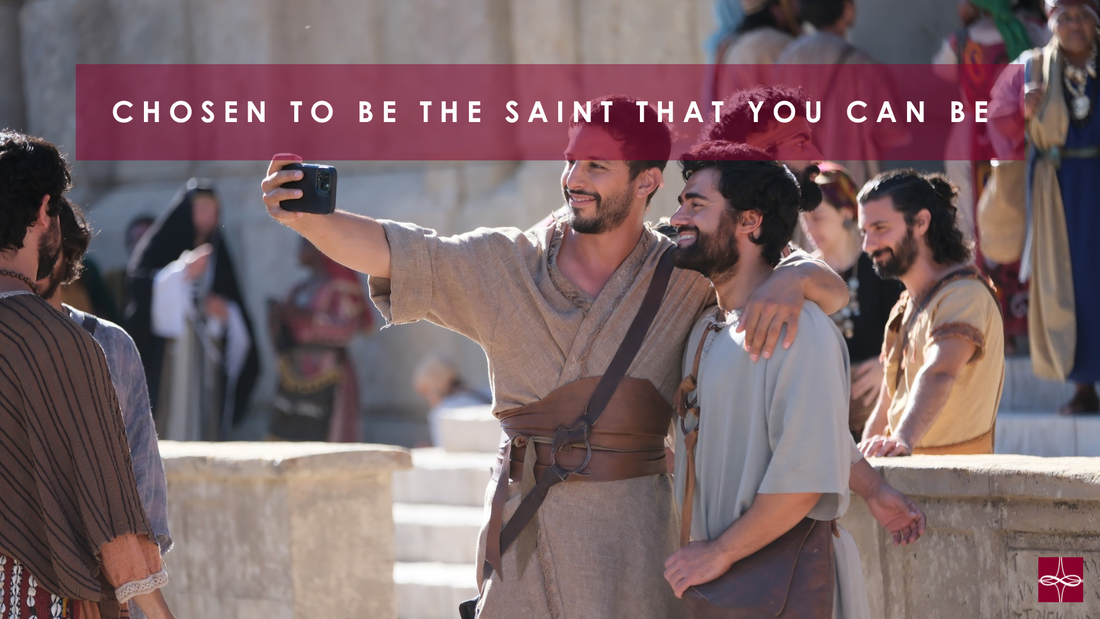
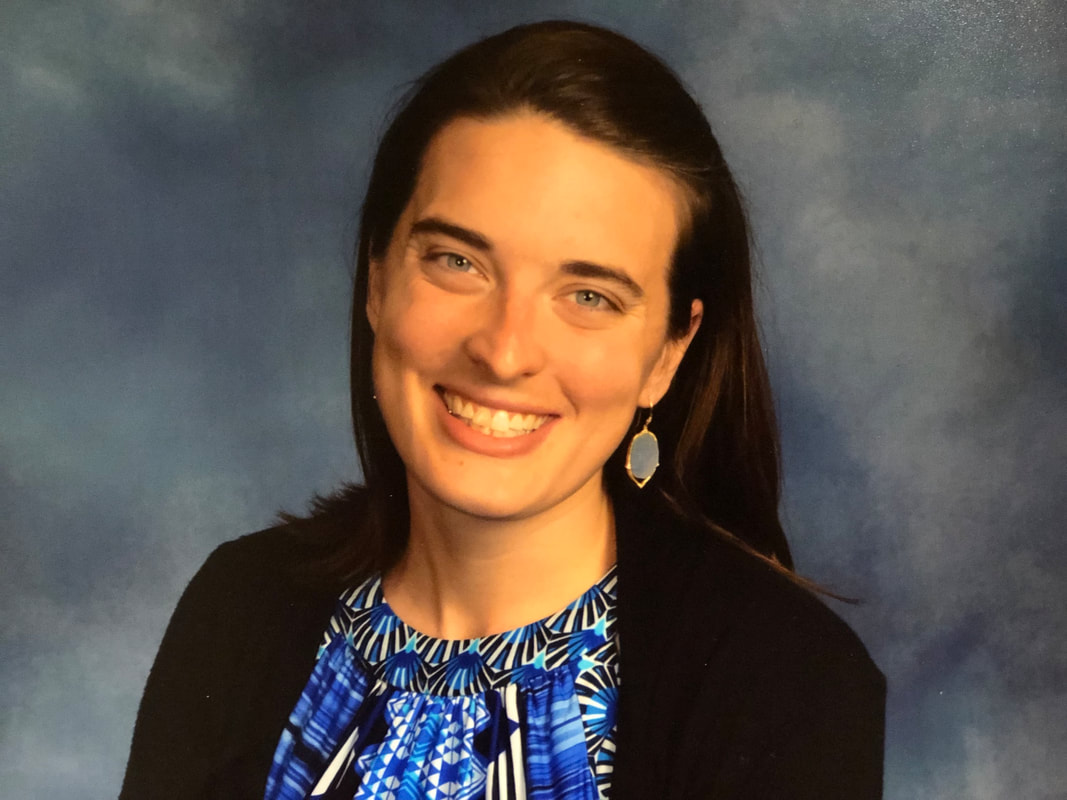
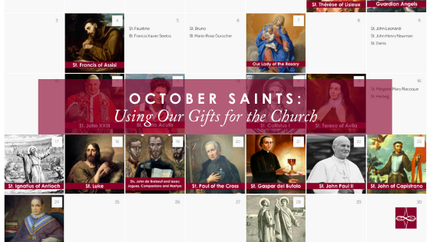

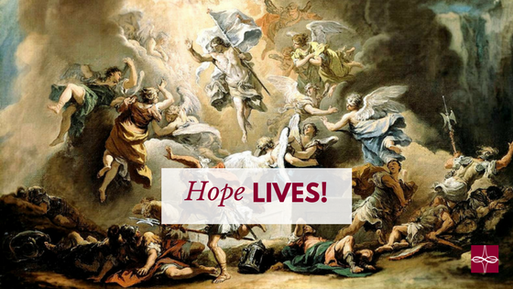
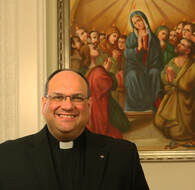



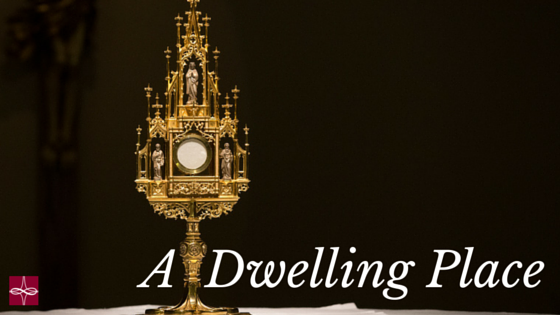
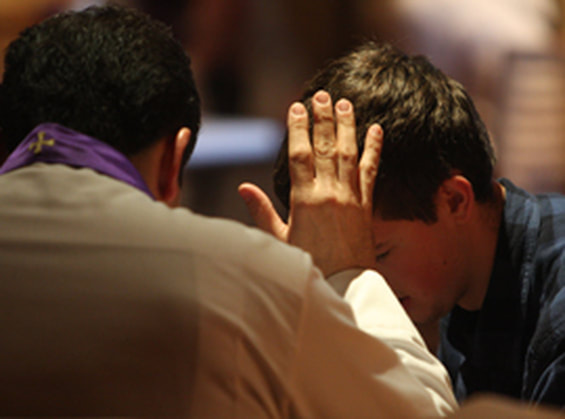


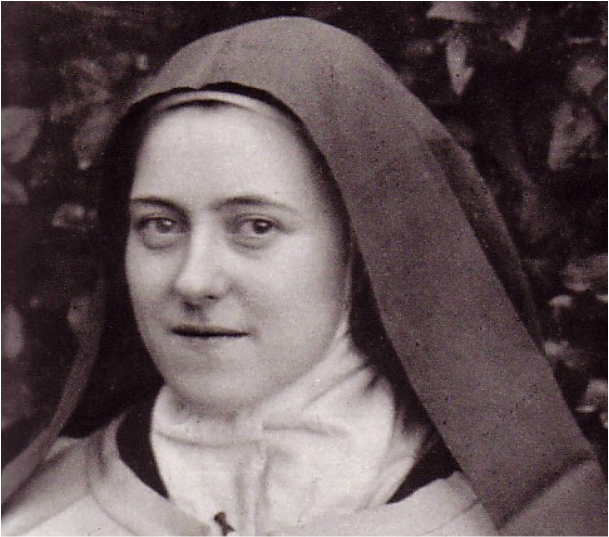
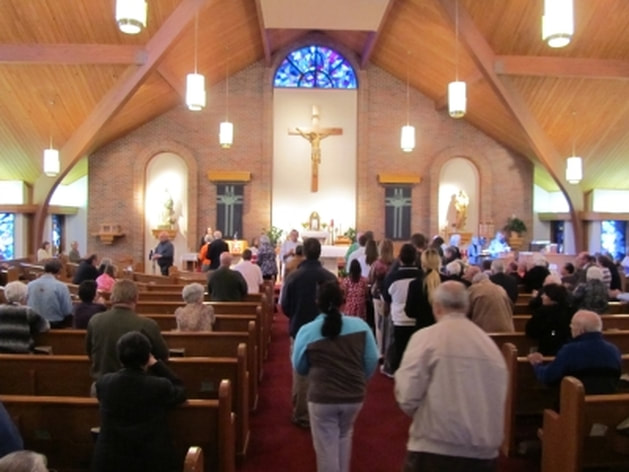
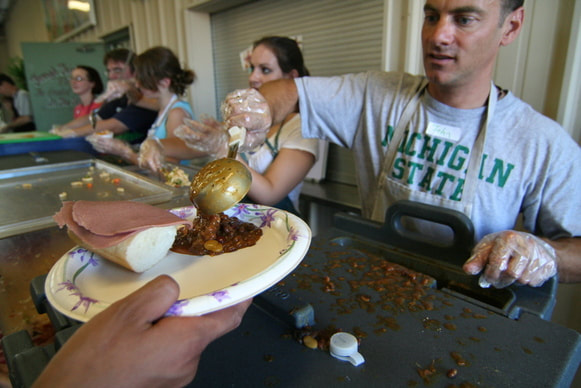
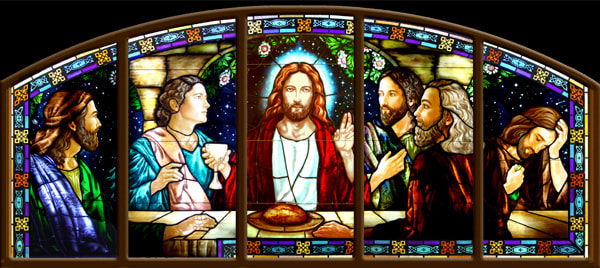
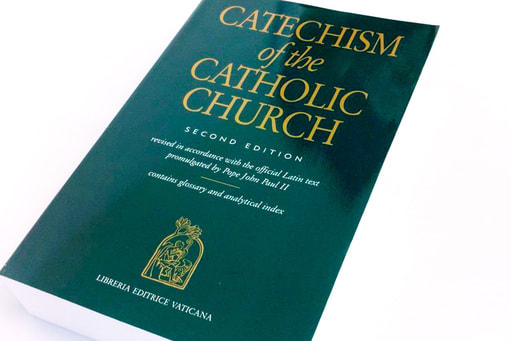
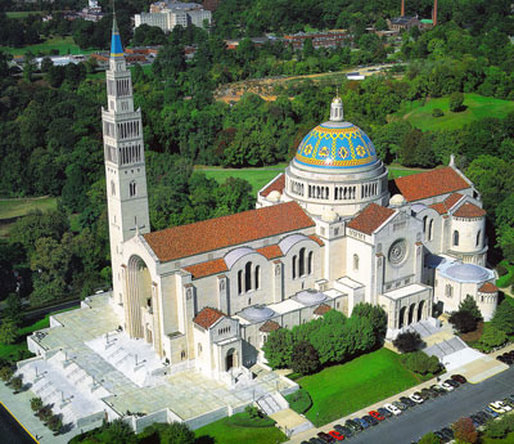
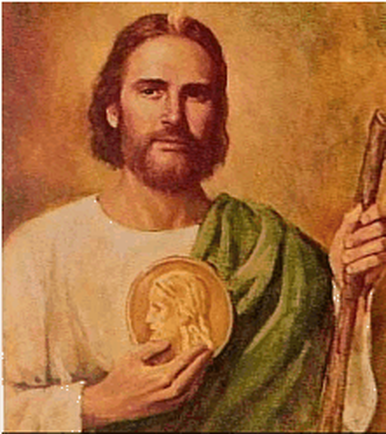
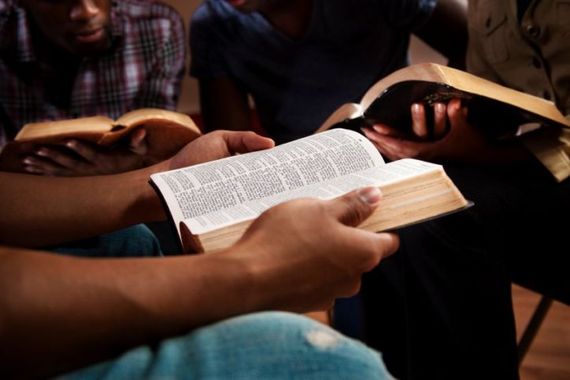
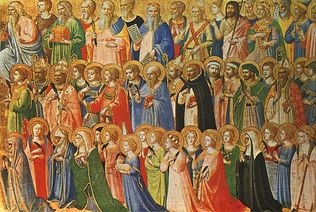
 RSS Feed
RSS Feed